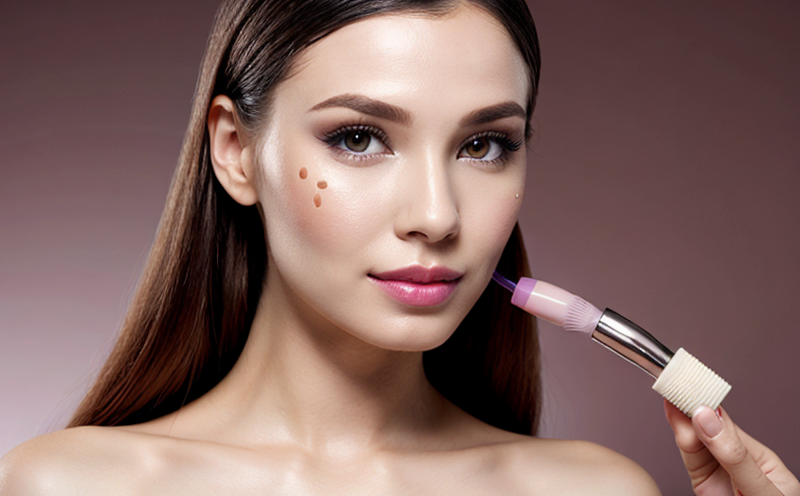In Vitro Mitochondrial Toxicity Testing for Cosmetics
The in vitro mitochondrial toxicity testing for cosmetics is a cutting-edge approach that evaluates the impact of cosmetic ingredients on cellular respiration and energy metabolism. This test specifically targets mitochondria, which are often referred to as the powerhouses of cells due to their role in producing most of the cell's supply of adenosine triphosphate (ATP), used as a source of chemical energy.
Conducted using cultured human cell lines or primary cell cultures, this test assesses whether cosmetic ingredients can induce mitochondrial dysfunction. Mitochondrial toxicity is a critical concern because it can lead to oxidative stress and cellular damage, which may contribute to the development of chronic diseases such as cancer, neurodegenerative disorders, and cardiovascular diseases.
The methodology involves exposing cells to the cosmetic ingredient under controlled conditions and then measuring various parameters indicative of mitochondrial health and function. These include respiratory chain activity, reactive oxygen species (ROS) production, membrane potential, and ATP synthesis. By using these indicators, we can determine whether a given cosmetic formulation could potentially cause adverse effects on human health.
This approach not only ensures better safety but also aligns with the shift towards more humane and ethical testing methods. It avoids the use of animal models, which are increasingly being phased out in favor of alternative testing strategies that comply with regulatory requirements such as those set by ISO standards and EU regulations.
The in vitro mitochondrial toxicity test is particularly valuable for cosmetic companies aiming to develop safer products while adhering to stringent quality control measures. By integrating this method into their R&D processes, they can ensure that new formulations do not pose risks associated with mitochondrial impairment.
For instance, when developing a skincare line or personal care product, understanding how different ingredients interact within the cellular environment helps in formulating products that are both effective and safe. This translates directly to enhanced consumer trust and satisfaction as well as reduced liability risks for manufacturers.
Scope and Methodology
The scope of this service encompasses evaluating the impact of cosmetic ingredients on mitochondrial function through an in vitro assay. The methodology involves several key steps:
- Culturing human cell lines or primary cells under controlled conditions.
- Exposing the cultured cells to various concentrations of the cosmetic ingredient(s) being tested.
- Maintaining these exposures for specified durations as per protocol specifications.
The assessment focuses on several critical parameters, including:
- Respiratory chain activity: Measured using assays like succinate dehydrogenase (SDH).
- Reactive oxygen species (ROS) production: Detected via fluorimetric or photometric methods.
- Mitochondrial membrane potential: Assessed by means of fluorescent dyes such as rhodamine 123 or tetramethylrhodamine ethyl ester (TMRE).
These measurements provide insights into the functional state of mitochondria and help identify any adverse effects resulting from exposure to cosmetic ingredients. The results are analyzed against predefined thresholds established by relevant international standards, ensuring consistency and reliability in testing outcomes.
Why Choose This Test?
- Compliance with regulatory requirements: Adherence to EU regulations and ISO standards ensures that your products meet global safety standards.
- Ethical considerations: By avoiding animal testing, you contribute positively towards reducing cruelty in product development.
- Rapid turnaround time: The streamlined process allows for quicker identification of potential issues early in the R&D phase.
Choosing this test offers numerous advantages beyond mere compliance. It enhances product safety by providing robust data on ingredient performance at a cellular level, which can inform formulation decisions and improve overall quality. Additionally, it supports sustainability goals by minimizing resource use during testing while still delivering comprehensive results.
Use Cases and Application Examples
| Use Case | Description |
|---|---|
| Evaluation of new ingredients | Assess the safety profile of newly discovered compounds before incorporating them into existing products or creating entirely new ones. |
| Formulation optimization | Determine optimal concentrations and combinations of ingredients to achieve desired effects without causing harm. |
| Batch-to-batch consistency | Ensure consistent quality across different batches by monitoring the impact of variations in raw materials or manufacturing processes. |
| Label claims validation | Support marketing and labeling efforts with scientific evidence demonstrating safety and efficacy based on actual cellular responses to ingredients. |
| Risk assessment for existing products | Evaluate whether any currently marketed cosmetic formulations might have unanticipated adverse effects on consumers' health due to mitochondrial toxicity. |
| New product development | Identify potential risks early in the pipeline, allowing companies to make informed decisions about which formulations proceed further into clinical trials or market release. |
The above use cases highlight how this testing method can be applied across various stages of cosmetic product lifecycle management. Whether it's during research and development phases or post-market surveillance, the insights gained from these tests contribute significantly to ensuring high-quality, safe cosmetics that meet both regulatory expectations and consumer demands.





